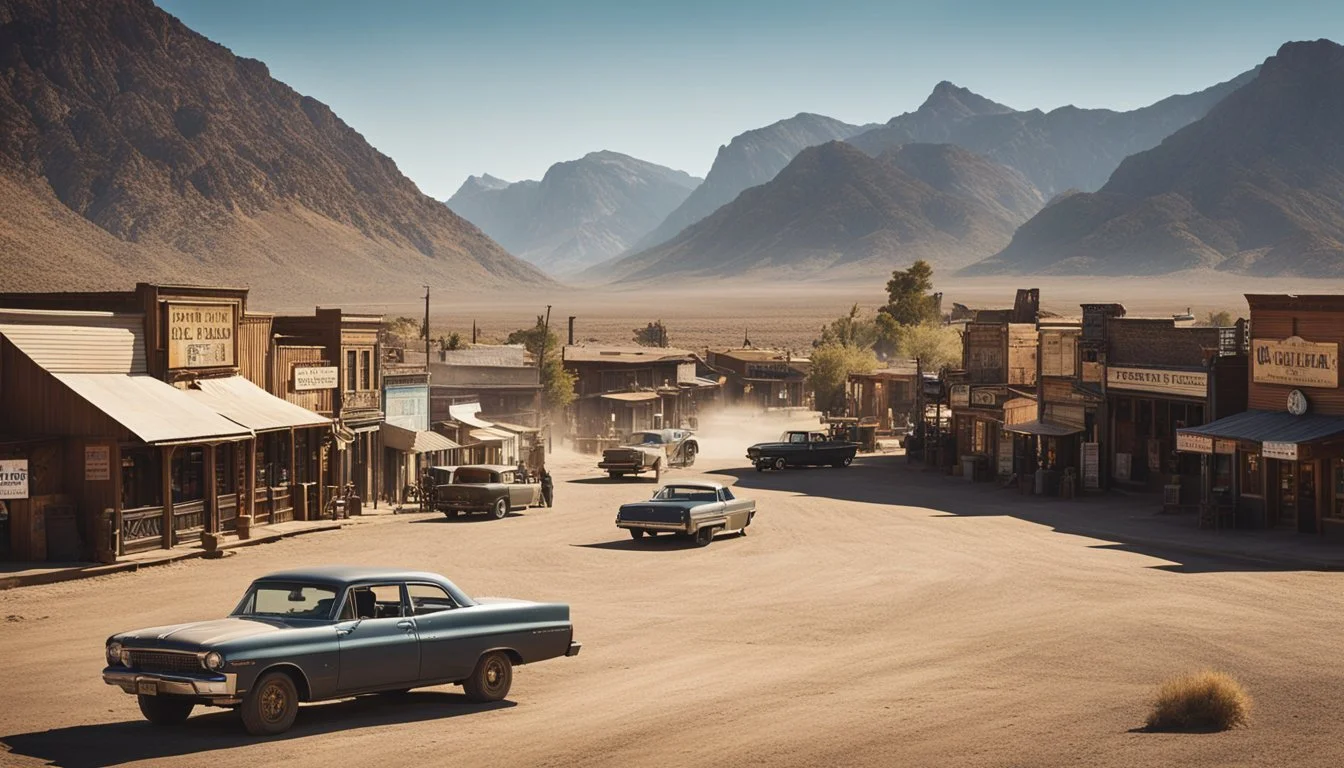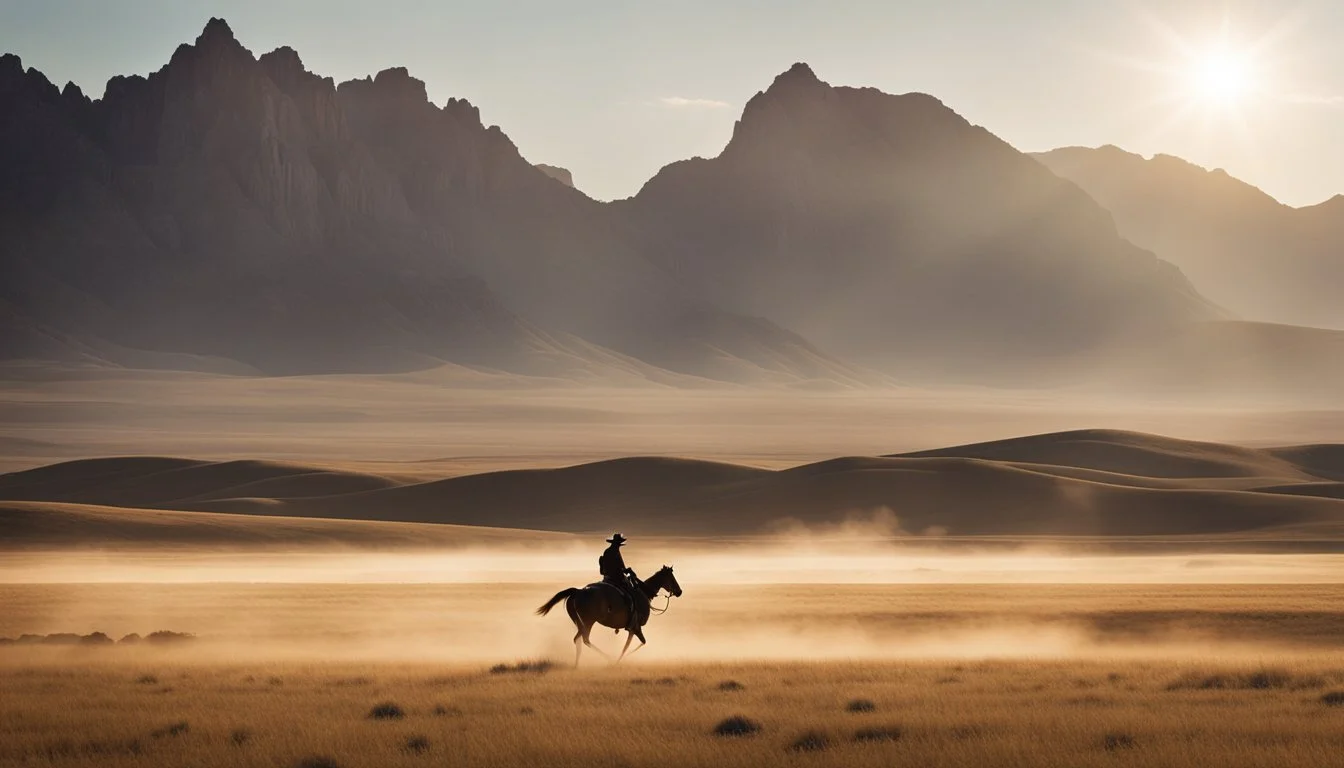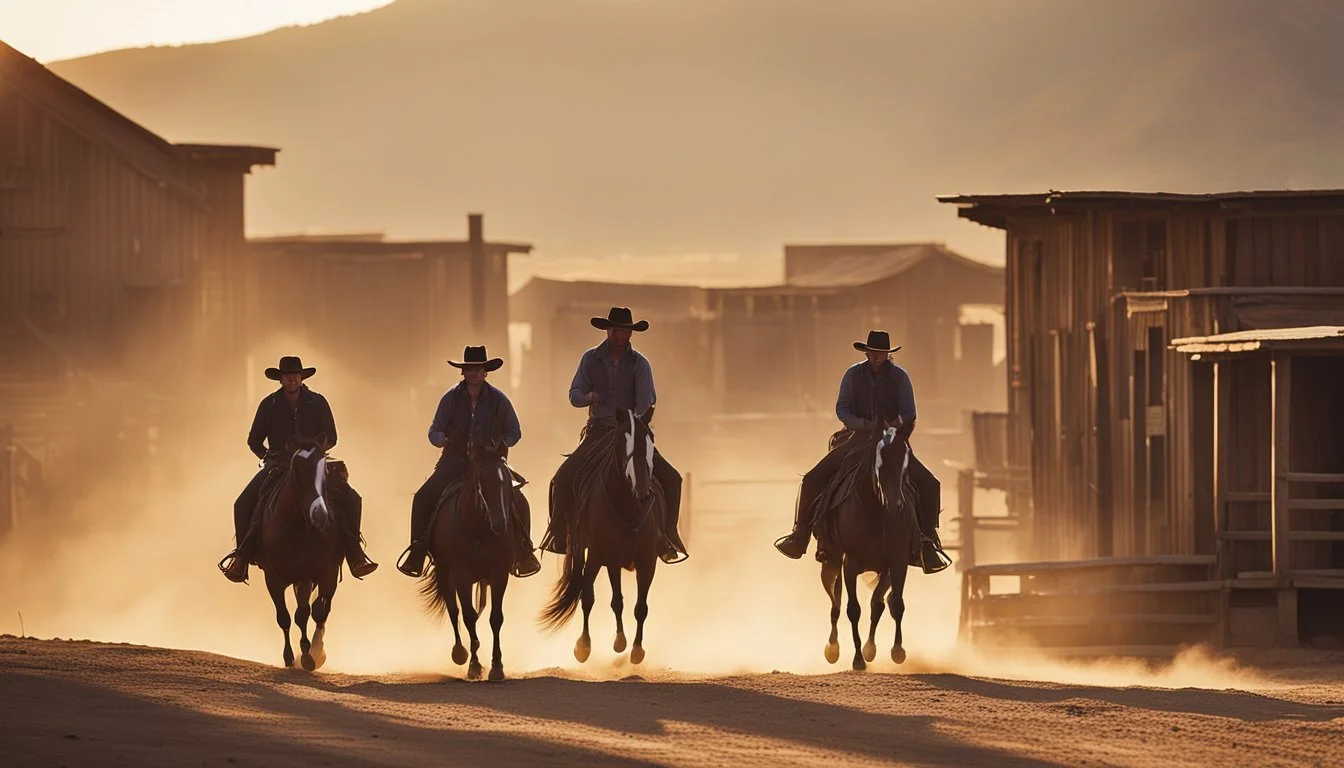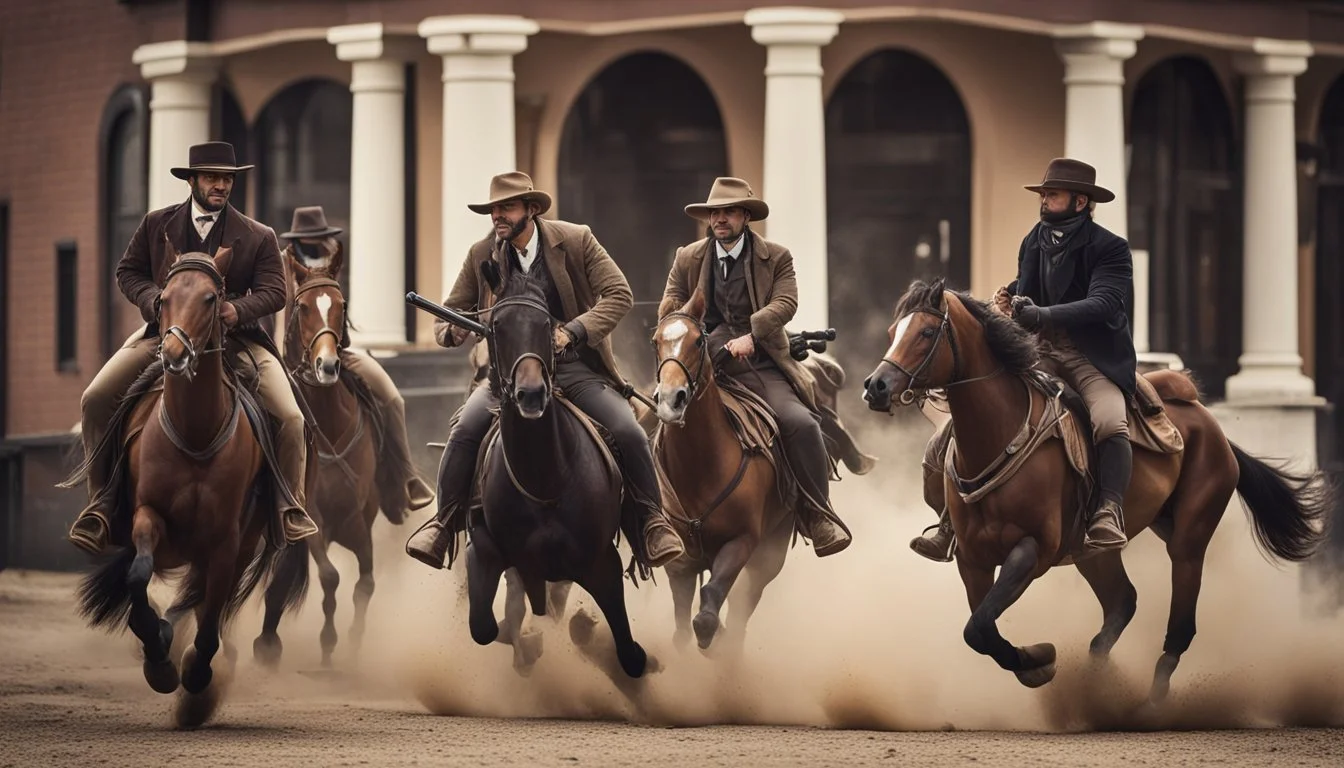4 Jim Younger Documentaries: The Youngest of the Younger Brothers
Exploring the Life of an Outlaw Gang Member
Jim Younger, the youngest of the infamous Younger brothers, played a significant role in the American Old West outlaw scene. As part of the James-Younger Gang, he participated in numerous bank and train robberies alongside his brothers Cole and Bob, as well as Jesse and Frank James. Jim's life story has captivated historians and filmmakers alike, leading to the creation of several documentaries exploring his criminal exploits and eventual capture.
These documentaries offer viewers a glimpse into the complex life of Jim Younger, from his early days in Missouri to his involvement in the James-Younger Gang and subsequent imprisonment. By examining primary sources, expert interviews, and historical reenactments, these films provide a comprehensive look at the youngest Younger brother's place in American outlaw history. Viewers can expect to gain insights into Jim's motivations, relationships with his family members, and the societal factors that contributed to his life of crime.
1) "Jesse James: American Outlaw" by PBS (2006)
"Jesse James: American Outlaw" is a PBS documentary that explores the life and legend of one of America's most infamous outlaws. The film delves into Jesse James' background as a Confederate guerrilla fighter during the Civil War.
It examines how James transitioned from soldier to outlaw, detailing his involvement in bank and train robberies across the Midwest. The documentary also addresses the public's fascination with James and how he became a folk hero to some.
Interviews with historians and archival materials provide insight into James' relationships with his family and gang members. The film discusses his eventual downfall and assassination by Robert Ford in 1882.
"Jesse James: American Outlaw" offers a balanced look at the man behind the myth, separating fact from fiction in the oft-romanticized tale of the Old West outlaw.
More information on PBS's "Jesse James: American Outlaw"
2) "The Younger Brothers: Legends of the West" (2008)
This documentary explores the lives of the Younger brothers, focusing on their roles in the James-Younger Gang. It provides a comprehensive look at their exploits during the post-Civil War era in the American West.
The film examines the brothers' backgrounds and motivations, shedding light on the factors that led them to a life of crime. It covers their involvement in various bank and train robberies alongside Jesse and Frank James.
Interviews with historians and descendants offer unique perspectives on the Younger brothers' legacy. The documentary also utilizes reenactments to bring key events to life, giving viewers a vivid sense of the time period.
"The Younger Brothers: Legends of the West" pays particular attention to Jim Younger, the youngest of the siblings. It explores his role in the gang and his experiences following their capture.
The film provides context for the brothers' actions by examining the social and political climate of the post-Civil War South. It offers a balanced view of their lives, neither glorifying nor condemning their choices.
3) "The Outlaw Trail: The Younger Brothers' Legacy"
"The Outlaw Trail: The Younger Brothers' Legacy" (2015) explores the lasting impact of the Younger brothers on American outlaw history. This documentary traces the path of their criminal exploits across the Midwest and beyond.
The film examines how the Younger brothers' activities influenced the development of law enforcement techniques in the late 19th century. It showcases their role in shaping the public perception of outlaws during that era.
Interviews with historians and descendants of the Younger family provide insights into the brothers' motivations and personal lives. The documentary also highlights the geographical areas where the Youngers operated, including Missouri, Minnesota, and Texas.
Archival footage and reenactments bring key moments in the Younger brothers' criminal careers to life. The film pays particular attention to their involvement with Jesse James and the infamous James-Younger Gang.
"The Outlaw Trail" concludes by assessing the Younger brothers' place in American folklore and their enduring legacy in popular culture.
More information on "The Outlaw Trail: The Younger Brothers' Legacy"
4) "The American West" by Robert Redford (2016)
"The American West" is a documentary series produced by Robert Redford. It aired on AMC in 2016, consisting of eight episodes. The series explores the history of the Western United States from 1865 to 1890.
The show covers significant events and figures of the American frontier. It combines dramatic reenactments with expert commentary to bring the Old West to life. Notable personalities featured include Jesse James, Billy the Kid, and Wyatt Earp.
Jim Younger, the youngest of the Younger brothers, is likely mentioned in the series. The Younger gang's exploits during this period would fit within the show's timeframe and subject matter.
Redford's involvement as executive producer lends credibility to the project. His experience with Western films adds depth to the series' portrayal of this era.
The documentary format allows for a factual presentation of historical events. It aims to separate truth from legend in many well-known Western stories.
More information on "The American West" series
Historical Context
Jim Younger, the youngest of the infamous Younger brothers, played a significant role in the American Old West during the post-Civil War era. His family's involvement in the conflict and subsequent outlaw activities shaped the course of their lives and left a lasting mark on American history.
The Younger Brothers in American History
The Younger brothers - Cole, Bob, Jim, and John - gained notoriety as members of the James-Younger Gang in the 1860s and 1870s. They engaged in a series of bank and train robberies across Missouri and neighboring states. Jim joined the gang in 1868, following his older brothers into a life of crime. The Youngers' exploits captured public imagination and contributed to the romanticized image of the American outlaw.
Their criminal activities drew the attention of law enforcement, including the Pinkerton Detective Agency. This led to violent confrontations and ultimately resulted in the capture of the Younger brothers.
Impact of the Civil War on the Younger Family
The Civil War profoundly affected the Younger family. Cole and Jim Younger fought for the Confederacy, with Jim joining Quantrill's Raiders in 1864 at a young age. The war's aftermath left deep scars on the family and the region. Economic hardship and lingering resentments pushed the brothers towards outlawry.
Jim's experiences during the conflict shaped his later actions. The loss of their father to Union militia further fueled their animosity towards authority. This tumultuous period set the stage for the Younger brothers' transformation from soldiers to outlaws, influencing their choices and the path that led Jim to become a notorious figure in American frontier history.
Jim Younger: The Man and the Myth
Jim Younger's life was marked by his involvement in the Confederate Army and subsequent outlaw activities. His role in the James-Younger Gang solidified his place in Wild West lore.
Early Life of Jim Younger
Jim Younger was born into a large family, the ninth of fourteen children. His parents were Henry Washington Younger and Bersheba Leighton Fristoe.
During the American Civil War, Jim joined the Confederate Army alongside his brother Cole. In 1864, he became a member of Quantrill's Raiders, a notorious guerrilla group.
Jim's early experiences in the war shaped his future path and relationships with other outlaws.
Role in the James-Younger Gang
After the war, Jim Younger joined the James-Younger Gang in 1868. The gang, led by Jesse and Frank James, specialized in bank and train robberies across several states.
Jim participated in numerous heists alongside his brothers Cole, John, and Bob. Their criminal activities drew the attention of Pinkerton agents.
In 1874, Jim was involved in a deadly gunfight with Pinkerton agents. His brother John was killed in the encounter, while Jim managed to escape.
The gang's most infamous raid occurred in Northfield, Minnesota in 1876. Jim was captured after the failed robbery attempt and sentenced to prison.
Cultural Legacy
Jim Younger's life and exploits left an enduring mark on American popular culture. His story continues to captivate audiences through various media portrayals and influences modern Western narratives.
Portrayals in Media
Jim Younger has been depicted in numerous films, television shows, and books. The 1980 film "The Long Riders" featured Keith Carradine as Jim Younger, offering a sympathetic portrayal of the outlaw.
In literature, Jim appears in several historical novels, including "Northfield" by Johnny D. Boggs. These works often explore the complex motivations behind his criminal activities.
Television documentaries like "American Experience: Jesse James" have featured segments on Jim Younger, providing historical context to his life and crimes.
Jim Younger's Influence on Modern Westerns
Jim Younger's story has shaped the archetype of the reluctant outlaw in Western fiction. His perceived struggle between loyalty to his brothers and desire for redemption resonates in contemporary Western narratives.
Modern Western films and TV series often draw inspiration from Jim's experiences, particularly his time in prison and attempts at reform. These themes appear in works like "Hell on Wheels" and "Godless."
Jim's story also influences discussions about the nature of justice and rehabilitation in Western-themed media, reflecting ongoing societal debates about the criminal justice system.






